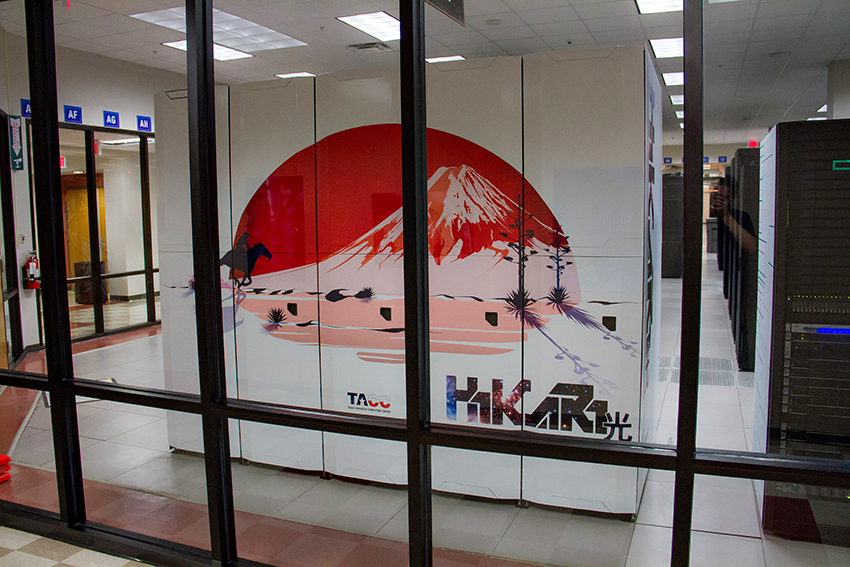Texas supercomputer Hikari is going green.
Hikari, named after the Japanese word for “light,” switches to solar power this week in an effort to make supercomputing more sustainable.
The supercomputer, part of UT’s Texas Advanced Computing Center, is a large, high-voltage direct current data center located on the Pickle Research Campus. It is accompanied by a solar farm that was built in June.
Supercomputers have high computational capacities and solve complex problems at fast speeds. Because Hikari acts as an isolated island for computing, it will be used for processing sensitive information.
“Mostly [the supercomputer is used for] patient data, cancer research — we’re starting to do some autism research on there,” said Dan Stanzione, executive director of TACC.
These processes consume large amounts of energy, creating a need for energy efficiency. Hikari will use 240 kilojoules per second from its solar farm, which is the size of 55 parking spaces and located in a parking lot within the Pickle Research Campus.
TACC and Japan’s government agency New Energy and Industrial Technology Development Organization established Hikari as part of a collaboration in efficient data centers in 2015.
TACC offers its facilities to the national research community with a mission of enabling scientific discovery through computing technologies. The center has a number of supercomputers capable of a wide range of computations, from cloud computing to predicting the weather.
Over 3,000 active projects across a broad range of fields currently use TACC facilities, according to a 2014 press release.
Stampede, one of TACC’s supercomputers, can perform up to 10 quadrillion operations per second.
“We’ve run about 7 million jobs on Stampede,” Stanzione said. “Everything from astronomy to weather forecasts to engineering new products, rocket engines [and] offshore oil platforms.”
Researchers also use Stampede to study and predict hailstorms. By using past storms to forecast future ones, scientists can better predict the weather and improve public safety.
TACC also worked with the team at the Laser Interferometer Gravitational-Wave Observatory that discovered gravitational waves in September, which validated Einstein’s general theory of relativity.
Although people may only associate supercomputing with science and engineering, researchers in humanities use TACC as well.
Philippe Pasquier, an assistant professor at Simon Fraser University, uses Stampede to study how humans move in his project, Movement Style Machine. Stampede runs algorithms to learn the nuances behind natural movement and can even express and detect emotional cues. The project has future applications in film and video games.
Using solar energy makes supercomputing technology greener and more accessible to students and researchers. In a press release, Stanzione said using renewable energy would be a step towards creating a new series of data centers.
Students and researchers can use supercomputers for their own research. The UT Department of Statistics and Data Sciences offers courses on supercomputer usage.















